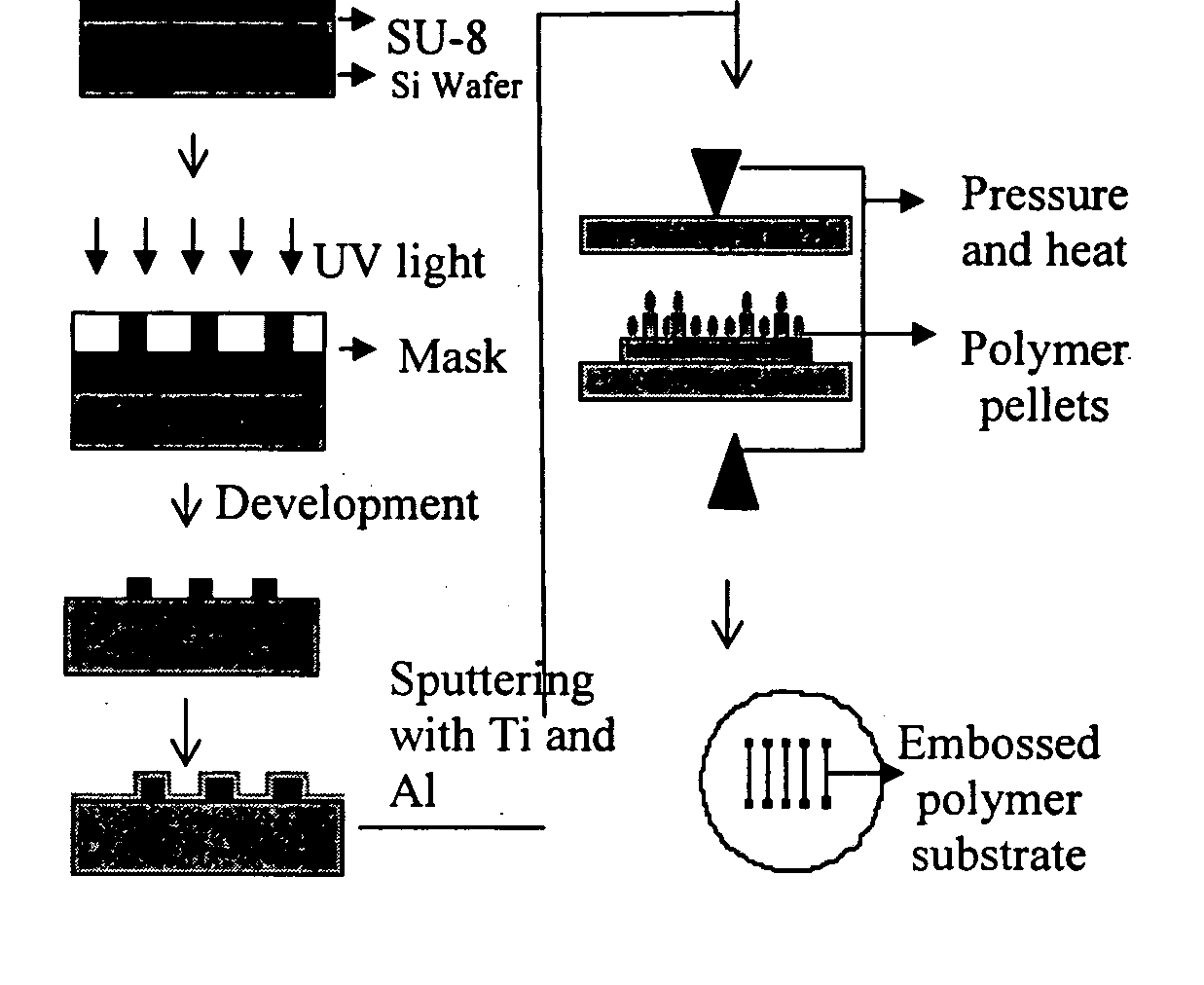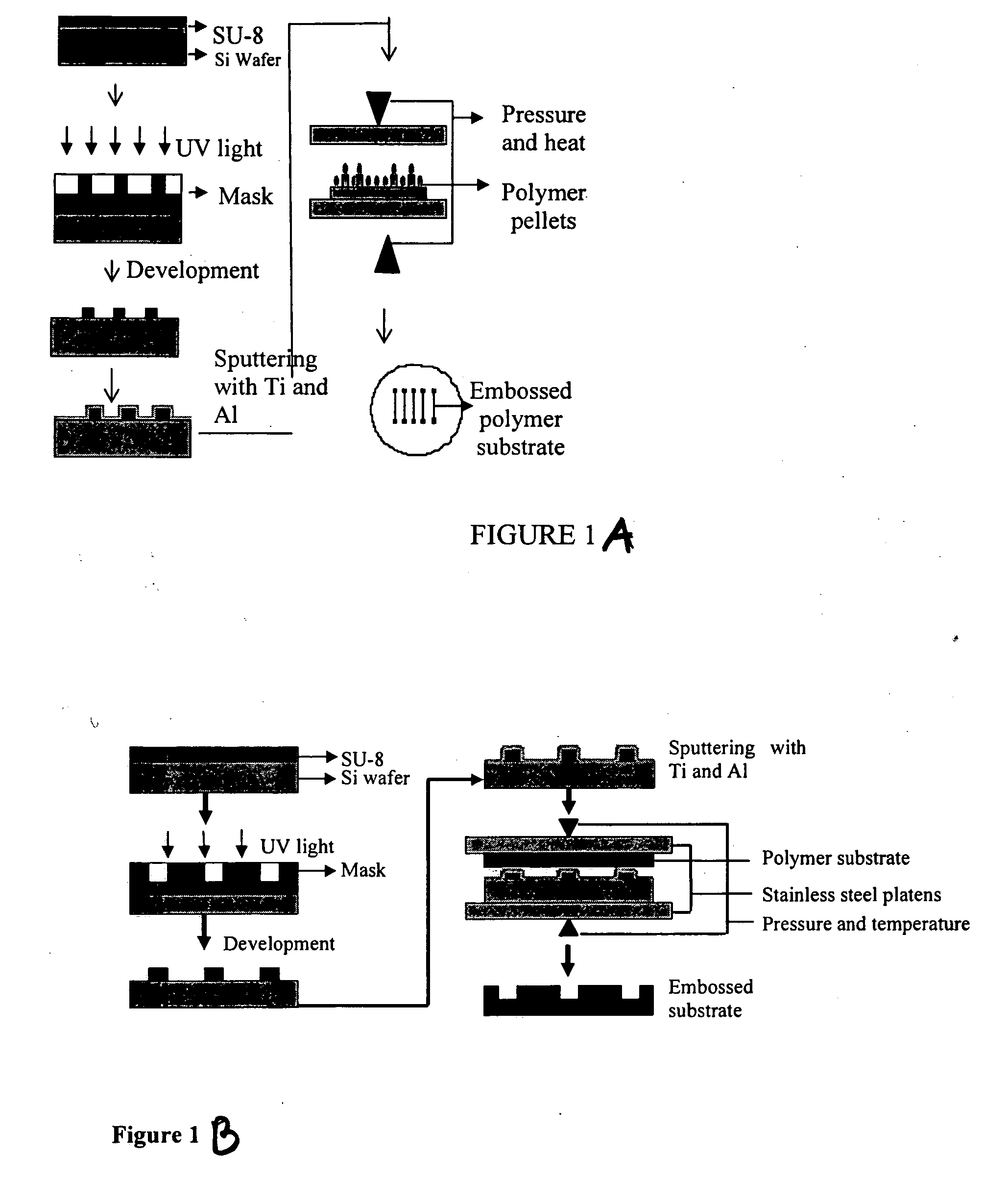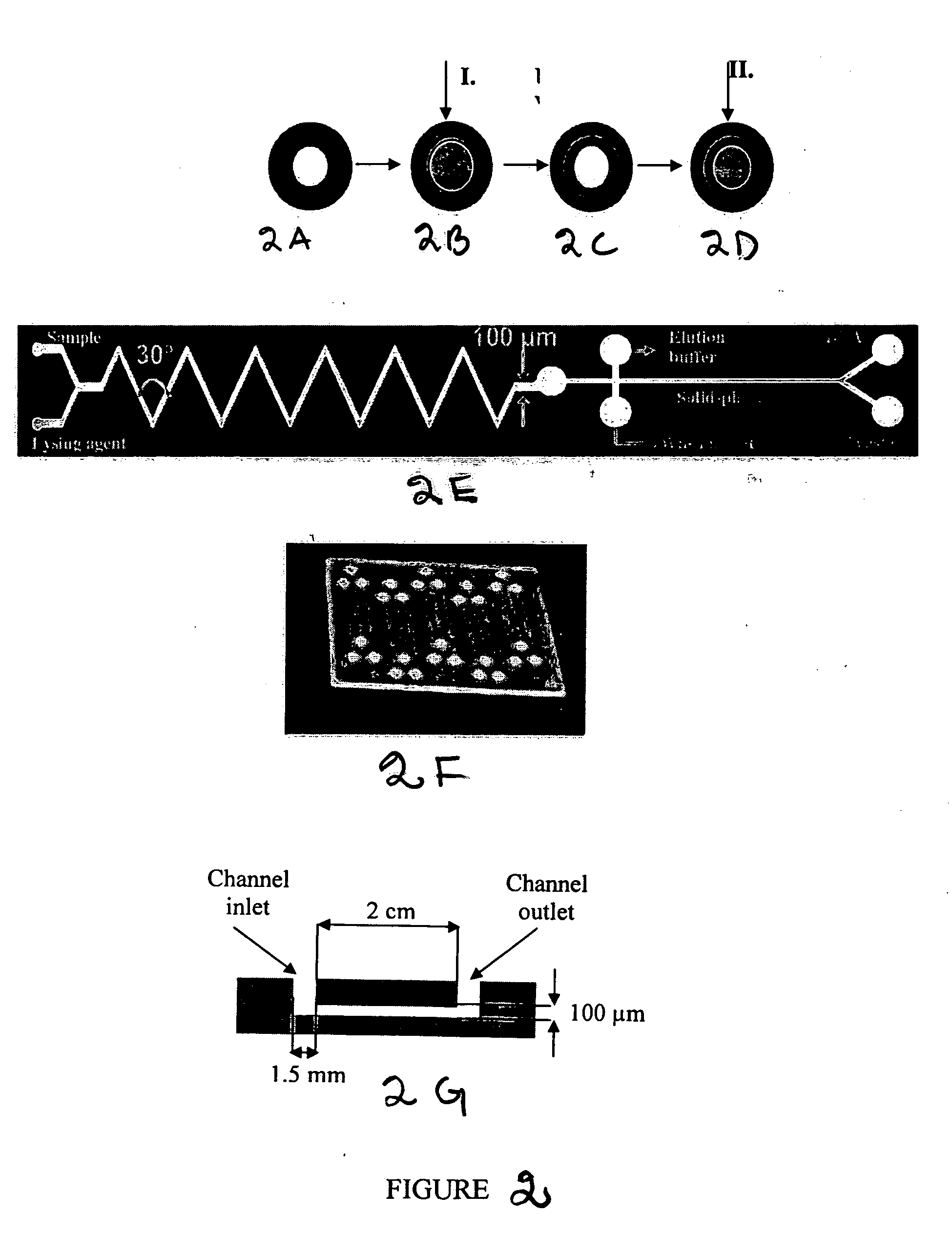Plastic microfluidic chip and methods for isolation of nucleic acids from biological samples
- Summary
- Abstract
- Description
- Claims
- Application Information
AI Technical Summary
Benefits of technology
Problems solved by technology
Method used
Image
Examples
example 1
[0146] Device fabrication: The microfluidic channels were fabricated by hot embossing with an SU-8 master. Channels of 100 μm and 165 μm depths were fabricated by this method. The widths of the channels varied from 50 μm to 250 μm and wells of 1.5 mm diameter were drilled at the end of the channels for sample introduction and collection. The SU-8 masters were fabricated on piranha-cleaned silicon wafers by spinning SU-8 50 photoepoxy (Microchem, Newton, Mass.) at a thickness of 100 μm and 165 μm onto the wafers. After pre-baking the wafers for 30 min at 95° C., the pattern was transferred through a mask by contact lithography. This was followed by development with SU-8 developer (Microchem) and post-baking the wafers for 1.5 h at 175° C. After this fabrication process, the SU-8 molds exhibited glass-like mechanical properties and had the negative pattern of the channels. The wafers were then sputter coated with 500 Å of Ti for adhesion, followed by 1000 Å of Al.
[0147] The microchan...
example 2
Immunoassay Methods Using the Microfluidic Device of the Invention
[0154] This example describes the development of fluorescence and chemiluminescence based microfluidic immunoassay techniques on a thermoplastic microchip. The immunoassays were applied to determine femtomolar concentrations of C-reactive protein (CRP), a classic inflammation marker associated with cardiovascular diseases. Because of the very high sensitivity of the described immunoassay techniques, they are suitable for developing saliva-based diagnostic tests. The microfluidic chips were fabricated in cyclic polyolefin by hot-embossing techniques. The surface of the microchannels were modified by immobilizing protein A to increase the sensitivity of the immunoassays, since protein A has high affinity for immunoglobulin G (IgG) of most species. Concentrations of CRP were determined on-chip by both fluorescence and chemiluminescence based detection methods. A heterogeneous., sandwich immunoassay scheme was applied in...
example 3
Purification of Biomolecules
[0176] The DNA extraction efficiency of the monolith / silica columns was tested through spectroscopic measurement of absorption at 260 nm. The extraction procedure itself consisted of load, wash and elution steps. The loading solution consisted of 0.5 μg / mL of λ DNA in chaotropic buffer containing GuSCN (guanidium thiocyanate) and 3% BSA (Bovine Serum Albumin). 3% BSA was added to confirm that the separation column was able to separate nucleic acids in the presence of proteins. The microchannels were conditioned with the loading buffer (without DNA) for 5 min before the subsequent extraction in the channel. Then 75 μL of the loading solution was passed through the microchannel at a flow rate of 300 μL / hour with a KDS100 syringe pump (manufactured by KD Scientific, Holliston, Mass.). The syringe was connected to the microchip using 360-μm-i.d. PEEK tubing and NANOPORT™ fittings. 75 μL of the wash buffer consisting of 70% ethanol was then passed through the...
PUM
| Property | Measurement | Unit |
|---|---|---|
| Length | aaaaa | aaaaa |
| Diameter | aaaaa | aaaaa |
| Diameter | aaaaa | aaaaa |
Abstract
Description
Claims
Application Information
 Login to View More
Login to View More - R&D
- Intellectual Property
- Life Sciences
- Materials
- Tech Scout
- Unparalleled Data Quality
- Higher Quality Content
- 60% Fewer Hallucinations
Browse by: Latest US Patents, China's latest patents, Technical Efficacy Thesaurus, Application Domain, Technology Topic, Popular Technical Reports.
© 2025 PatSnap. All rights reserved.Legal|Privacy policy|Modern Slavery Act Transparency Statement|Sitemap|About US| Contact US: help@patsnap.com



